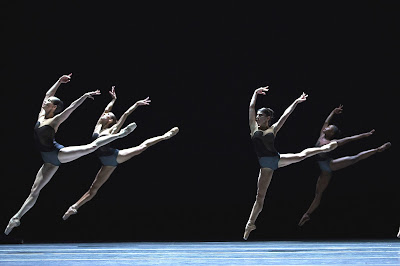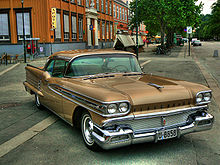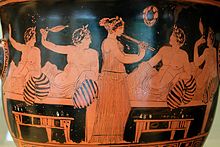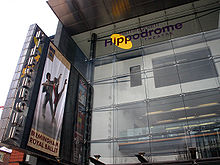Birmingham Royal Ballet - Carmina burana trailer from Birmingham Royal Ballet on Vimeo.
Birmingham Royal Ballet, Carmina Burana, Hippodrome, 20 June 2015
David Bintley comes from Honley which is almost next door to mine (see My Home and Bintley's 12 May 2015). It is not possible to grow up in this part of the world without coming across The Choral. It performs at least three series of concerts to full houses in Huddersfield Town Hall every year. In The Choral 19 Dec 2013 I reviewed one of its concerts and wrote:
That was a very special evening which I have already described In Praise of Bintley on 21 June 2015. Two works were performed that day: Bintley's latest ballet The King Dances, which I reviewed in A Special Ballet for a A Special Day 23 June 2015 and Carmina Burana the very first that he created after he was appointed artistic director of the company. I had come to see The King Dances but Carmina Burana was a treat. A multimedia spectacular. A feast as much for the ears as for the eyes. This was the first time I had seen the ballet and how and why I had missed it all those years is a mystery.
Carl Orff's score has always been popular, particularly O Fortuna. Bintley translated her into the Empress of the World, a blindfolded woman in black shift on high heels representing blind fortune. She danced alone completely oblivious to human merit and indeed the human condition. On 20 June 2015 she was danced brilliantly by Céline Gittens. I have seen quite a lot of that dancer this year and my admiration for her has grown in every performance. Incidentally, I was delighted to read about her promotion in the company. I offer my congratulations to her and the other dancers who have been promoted to the enormous number that she and they must already have received (see End of Season Announcements 29 June 2015).
In the Carmina Burana Orff set to music several secular poems about medieval life. Bintley created what are effectively 6 mini-ballets around each of those poems. O Fortuna was an encounter between lady luck (the Empress Fortuna) and seven seminarians. Spring celebrates the fertility of the earth but also of womankind. It is set in a maternity ward with women who are either about to give birth or who have given birth against a backdrop of drying sheets and nappies with the hapless father or naive body danced by Jamie Bond. The next scene is bucolic with village lads in their colourful jackets and the village lasses in their pony tails competing for the attention of Elisha Willis. The second seminarian, Matthias Dingman (who has also been promoted) in a boiling rage seeks solace in the tavern where he and five gluttons in fat suits are served Daria Stanciulescu in a tureen. Finally, the third seminarian, Tyrone Singleton, returns to Fortuna in the Court of Love where he is stripped to his underpants. One of the most effective and affecting endings to a ballet that I have ever seen.
But there are three other stars to this ballet: the designer Philip Prowse who designed the magnificent and spectacular sets and costumes, Philip Mumford for his lighting and the singers of Ex Cathedra. We in Huddersfield like to think that the Choral has a unique sound which you can best appreciate in the Dies Irae of Verdi's Requiem. Birmingham's magnificent choir Ex Cathedra came closer to that sound than any choir I have heard before or since.
Carmina Burana is of course 20 years old but to me it was as fresh and vibrant as if it had been created yesterday.
"So what's all this got to do with ballet or even dance?" I hear you say. Well I did reserve the right to go off topic occasionally for an exceptional concert and this was certainly exceptional. And we dance in Huddersfield as well as sing (see "The Base Studios, Huddersfield"). We produced David Bintley of the Birmingham Royal Ballet. I don't know whether he had any connection with the Choral or even attended a concert but you can't live in this part of Yorkshire without knowing about it. The Choral must have been part of Bintley's cultural heritage."I asked Bintley about his cultural influences when he addressed the London Ballet Circle last month and he confirmed that my suspicion was right. However, my suspicions would also have been confirmed by the performance of Carmina Burana at the Hippodrome on 20 June 2015 to celebrate Bintley's 20th anniversary as artistic director of the Birmingham Royal Ballet and the 25th anniversary of the company's move to Birmingham.
That was a very special evening which I have already described In Praise of Bintley on 21 June 2015. Two works were performed that day: Bintley's latest ballet The King Dances, which I reviewed in A Special Ballet for a A Special Day 23 June 2015 and Carmina Burana the very first that he created after he was appointed artistic director of the company. I had come to see The King Dances but Carmina Burana was a treat. A multimedia spectacular. A feast as much for the ears as for the eyes. This was the first time I had seen the ballet and how and why I had missed it all those years is a mystery.
Carl Orff's score has always been popular, particularly O Fortuna. Bintley translated her into the Empress of the World, a blindfolded woman in black shift on high heels representing blind fortune. She danced alone completely oblivious to human merit and indeed the human condition. On 20 June 2015 she was danced brilliantly by Céline Gittens. I have seen quite a lot of that dancer this year and my admiration for her has grown in every performance. Incidentally, I was delighted to read about her promotion in the company. I offer my congratulations to her and the other dancers who have been promoted to the enormous number that she and they must already have received (see End of Season Announcements 29 June 2015).
In the Carmina Burana Orff set to music several secular poems about medieval life. Bintley created what are effectively 6 mini-ballets around each of those poems. O Fortuna was an encounter between lady luck (the Empress Fortuna) and seven seminarians. Spring celebrates the fertility of the earth but also of womankind. It is set in a maternity ward with women who are either about to give birth or who have given birth against a backdrop of drying sheets and nappies with the hapless father or naive body danced by Jamie Bond. The next scene is bucolic with village lads in their colourful jackets and the village lasses in their pony tails competing for the attention of Elisha Willis. The second seminarian, Matthias Dingman (who has also been promoted) in a boiling rage seeks solace in the tavern where he and five gluttons in fat suits are served Daria Stanciulescu in a tureen. Finally, the third seminarian, Tyrone Singleton, returns to Fortuna in the Court of Love where he is stripped to his underpants. One of the most effective and affecting endings to a ballet that I have ever seen.
But there are three other stars to this ballet: the designer Philip Prowse who designed the magnificent and spectacular sets and costumes, Philip Mumford for his lighting and the singers of Ex Cathedra. We in Huddersfield like to think that the Choral has a unique sound which you can best appreciate in the Dies Irae of Verdi's Requiem. Birmingham's magnificent choir Ex Cathedra came closer to that sound than any choir I have heard before or since.
Carmina Burana is of course 20 years old but to me it was as fresh and vibrant as if it had been created yesterday.













